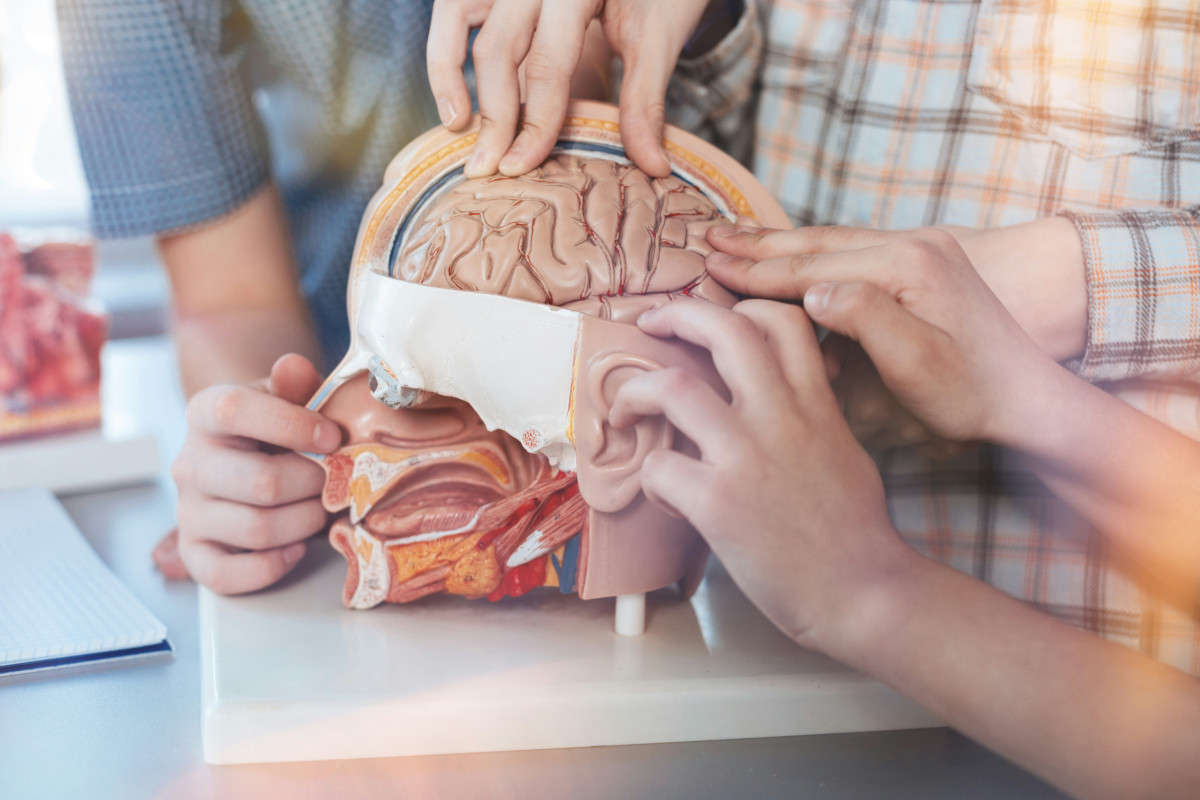Migraine – a remnant of human history?
We have known for several years that migraine – or rather, the predisposition to develop migraine – is influenced, among other things, by a range of genes within the human genetic make-up. Like all our genes, they are subject to constant change. Traits which prove to be a disadvantage are removed from our genetic material sooner or later, while the advantageous ones remain. In this way, living creatures – including us humans – are constantly adapting to the environment in which they live.
-
References
- Gormley P, Anttila V, Winsvold BS, Palta P, Esko T, Pers TH, Farh KH, Cuenca-Leon E, Muona M, Furlotte NA, Kurth T, Ingason A, McMahon G, Ligthart L, Terwindt GM, Kallela M, Freilinger TM, Ran C, Gordon SG, Stam AH, Steinberg S, Borck G, Koiranen M, Quaye L, Adams HH, Lehtimäki T, Sarin AP, Wedenoja J, Hinds DA, Buring JE, Schürks M, Ridker PM, Hrafnsdottir MG, Stefansson H, Ring SM, Hottenga JJ, Penninx BW, Färkkilä M, Artto V, Kaunisto M, Vepsäläinen S, Malik R, Heath AC, Madden PA, Martin NG, Montgomery GW, Kurki MI, Kals M, Mägi R, Pärn K, Hämäläinen E, Huang H, Byrnes AE, Franke L, Huang J, Stergiakouli E, Lee PH, Sandor C, Webber C, Cader Z, Muller-Myhsok B, Schreiber S, Meitinger T, Eriksson JG, Salomaa V, Heikkilä K, Loehrer E, Uitterlinden AG, Hofman A, van Duijn CM, Cherkas L, Pedersen LM, Stubhaug A, Nielsen CS, Männikkö M, Mihailov E, Milani L, Göbel H, Esserlind AL, Christensen AF, Hansen TF, Werge T; International Headache Genetics Consortium; Kaprio J, Aromaa AJ, Raitakari O, Ikram MA, Spector T, Järvelin MR, Metspalu A, Kubisch C, Strachan DP, Ferrari MD, Belin AC, Dichgans M, Wessman M, van den Maagdenberg AM, Zwart JA, Boomsma DI, Smith GD, Stefansson K, Eriksson N, Daly MJ, Neale BM, Olesen J, Chasman DI, Nyholt DR, Palotie A. Meta-analysis of 375,000 individuals identifies 38 susceptibility loci for migraine. Nat Genet. 2016 Aug;48(8):856-66. doi: 10.1038/ng.3598. Epub 2016 Jun 20. Erratum in: Nat Genet. 2016 Sep 28;48(10 ):1296. PMID: 27322543; PMCID: PMC5331903.
- Grunspan DZ, Nesse RM, Barnes ME, Brownell SE. Core principles of evolutionary medicine: A Delphi study. Evol Med Public Health. 2017 Dec 26;2018(1):13-23. doi: 10.1093/emph/eox025. PMID: 29493660; PMCID: PMC5822696.
- Loder E. What is the evolutionary advantage of migraine? Cephalalgia. 2002 Oct;22(8):624-32. doi: 10.1046/j.1468-2982.2002.00437.x. PMID: 12383059.
- Nesse RM. Maladaptation and natural selection. Q Rev Biol. 2005 Mar;80(1):62-70. doi: 10.1086/431026. PMID: 15884737.
- Stein M. The evolutionary advantage of migraine. Cephalalgia. 2003 Nov;23(9):931; author reply 931. doi: 10.1046/j.1468-2982.2003.t01-1-00598.x. PMID: 14616937.
- Williams GC, Nesse RM. The dawn of Darwinian medicine. Q Rev Biol. 1991 Mar;66(1):1-22. doi: 10.1086/417048. PMID: 2052670.
- Iyengar S, Johnson KW, Ossipov MH, Aurora SK. CGRP and the Trigeminal System in Migraine. Headache. 2019 May;59(5):659-681. doi: 10.1111/head.13529. Epub 2019 Apr 14. PMID: 30982963; PMCID: PMC6593989.






















